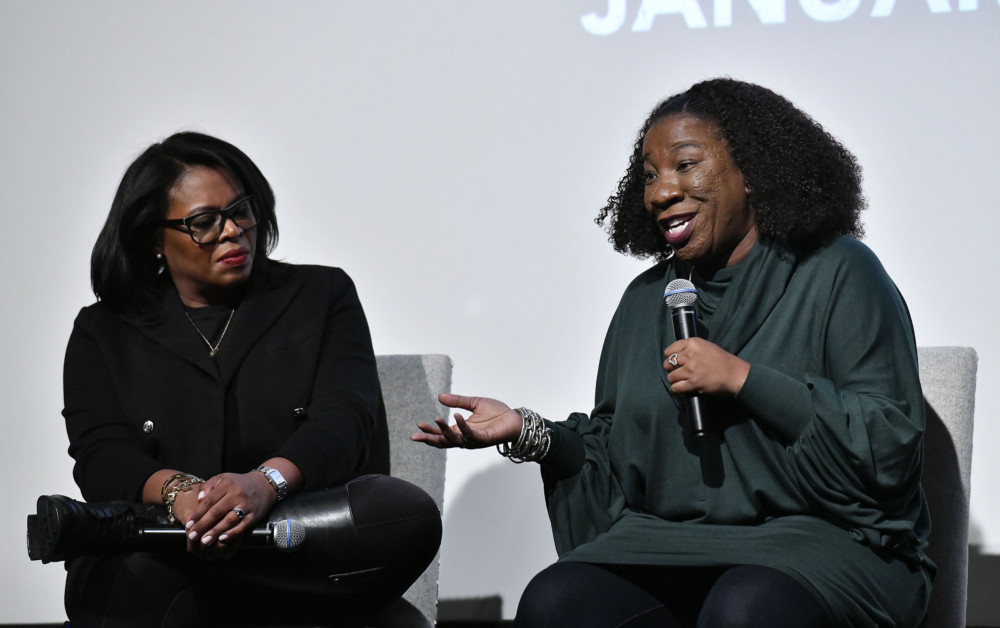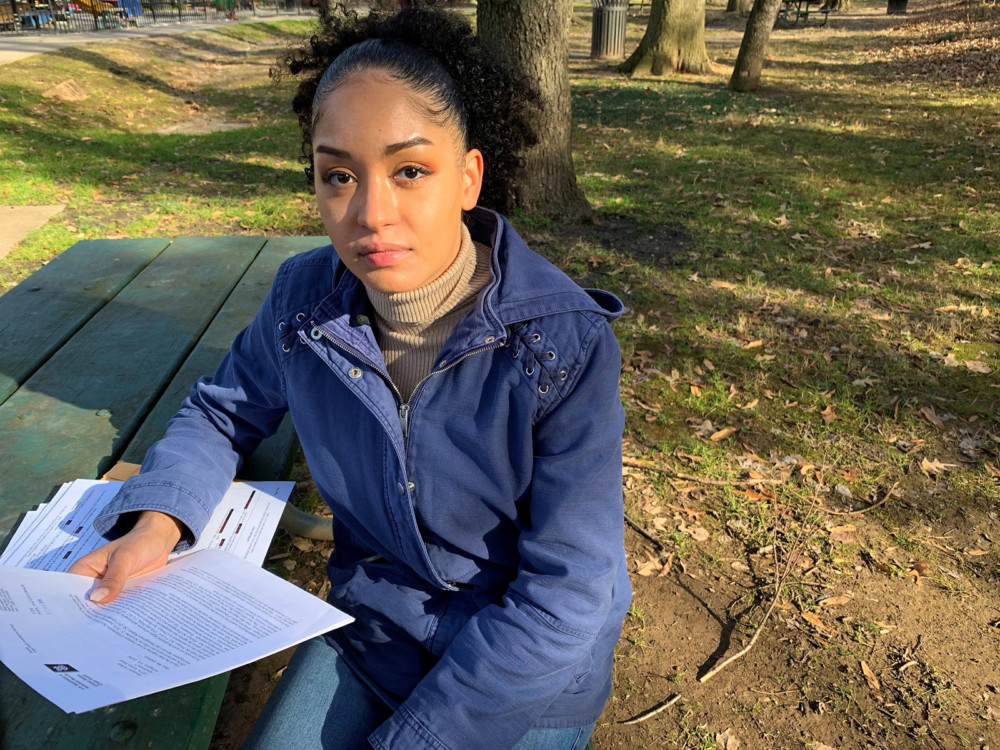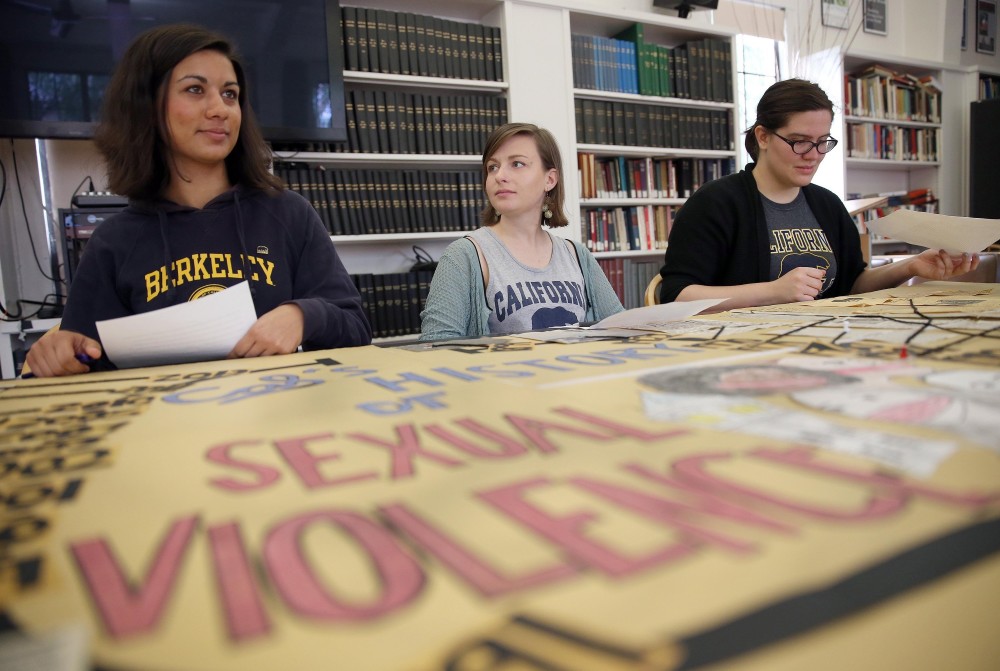By Darcel Rockett
Chicago Tribune
WWR Article Summary (tl;dr) #MeToo founder Tarana Burke’s latest project is the digital platform “me too. act too.” The crowd-sourced platform enables anyone, anywhere to get active in the fight to end sexual violence.
Chicago
It’s been three years since #MeToo went viral and those two words changed how we talk about sexual violence.
Tarana Burke, the civil rights activist and founder of the global #MeToo movement, is continuing her decades-long global fight for survivor justice during COVID-19 and amid ongoing social injustices. Her latest project is the digital platform me too. act too., a campaign that gives survivors, advocates, and allies tools to work toward a world free of sexual violence. The crowd-sourced entity enables anyone, anywhere to get active in the fight to end sexual violence.
The me too. act too. website allows users to enter their location and choose their interests, so they can easily tap into events and activities that further the cause. Users also can create and save their own plans of action and cross items off their to-do list as they go. It’s technology that helps people feel connected to the movement by taking part in it. Burke said this is the next iteration, a “vision for a way forward, for adding to the work to end sexual violence.”
“The ‘what’s next’ question was always baffling to me because I would say: ‘We are next. This is not a spectator sport,'” she said. “This is not a movement that I meant for people to stand on the sidelines and watch happen. There is no movement if people are not actively engaged in it. This is about going deeper.”
The #MeToo hashtag created a global community of survivors of sexual assault, and the movement has been focusing on specific communities of survivors, including queer, trans, disabled and people of color. Black women, for instance, have the second highest rate of sexual violence in the United States, second only to Native women.
“Whether I ask survivors, or ask people who want to be advocates or allies to this work, a lot of times they are clear that they wanted to be involved, but they weren’t sure how to go about doing that,” Burke said. “This work that we created was about providing a roadmap for people to join the movement, to make an impact in the work to end sexual violence, without having to commit their lives to it, but to be dedicated to at least doing something, because that’s really what it takes, everybody doing something.”
We talked to Burke about the #MeToo movement, me too. act too., and how she’s progressed past the viral hashtag. The following interview has been condensed and edited.
Q: Is this a platform for the people, run by the people?
A: The #MeToo movement has a website that is a platform for healing for survivors, that is already open and active. The thing we’re launching is strictly about action. You don’t have to be a survivor of sexual violence to participate. You just have to be a person who wants to see sexual violence end.
It’ll be monitored in the sense that we are watching who’s contributing, because people can also contribute action. And so, we are looking at who’s contributing, what they’re saying, what they’re suggesting and making sure that they’re viable, valuable options that people are adding.
Q: Was this platform designed with sociologists and therapists lending their ideas? Can we get tangible tips on how to help survivors?
We separate the work into healing and action _ those are the two buckets that we think of when we think of the movement. The healing side was developed with therapists and professionals from the fields who have been doing this work for a long time to curate the resources that survivors would need for their healing work.
You don’t need a psychologist to figure out how to take action in your community. The people who we reached out to for this platform are the people who are trying and experimenting with ways to support survivors in their community, people who have put together grassroots organizations, who are working in sexual violence.
This platform is about showing people that you can have tangible ways: Take a training, volunteer, donate, join a campaign. Those are very active, tangible ways to be a part of movement. Those are the actions.
We have something called micro-actions, actions like: You need to read this book, you need to listen to this podcast, you need to learn about this topic _ things that people can do in their everyday lives that are also a part of this movement.
A big part of this movement is learning about rape culture and how rape culture impacts and creates the space for violence to happen. The platform is not just about “put on your boots and hit the ground.” It’s about “I’m committed to ending sexual violence. What kind of change am I going to make in my life? How am I going to be a personal example of what society can look like if we are more informed and more in tune and more connected to the issue of sexual violence?”
Q: As a leader in this space, how have you had to pivot in 2020?
A: The pivot has not really been a pivot. It’s been sort of an unfolding of the multitudes, the layers that exist in this issue. When #MeToo went viral, the media was very focused on the powerful people who came forward and who were accused.
Then we saw the issue of sexual harassment in the workplace rise to the top. Sexual harassment in the workplace is vitally important to address, but it is one piece of the spectrum of sexual violence that happens to people in a lifetime. If you are only focused on that one piece of the spectrum, you lose the folks who are dealing with adult survivors of child sexual abuse, sexual violence on college campuses and on and on.
This is not about pivoting for the moment. It’s about educating people and expanding their understanding of the breadth of social justice issues. I have to say to people: “This is also a part of the #MeToo movement.” Dealing with the issue of sexual violence and police brutality in our community is also dealing with an issue of sexual violence.
When people talk about defunding the police, we’re talking about taking those funds and putting them toward social justice issues and services in our community. Law enforcement has historically not been supportive of survivors of sexual violence, particularly in communities of color. Yeah, we need to defund the police to make sure that there are institutions and entities set up that can more adequately respond to the needs of survivors of color.
All of those issues intertwine, and it’s just been a moment for us to use this opportunity to expand people’s understanding and thinking around it.
Q: That statement feeds into the Black Girl Freedom Fund that kicked off in September. Is that why you lent your support to the initiative that advances the well-being of Black girls and their families?
A: The Black Girl Freedom Fund was founded by a group of Black women who are my friends and colleagues, who I knew before #MeToo went viral, who came together to say that if you really care about the lives of Black people, you have to care about the lives of Black girls. When the attention turns to children in the Black community, it often goes to boys, not to young girls. So we have to be intentional about supporting Black girls. We also know that 60% of Black girls will experience sexual violence by the time they turn 18. So, investing in the futures of Black girls is also investing in future survivors, but also trying not to create new survivors. It’s all connected.
___
Distributed by Tribune Content Agency, LLC.

















































































































































































































































































































































































